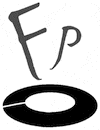Tango en Flor: 100 years of Tango… in one blog post and five hours of Spotify
This playlist is Tango 101, an intro to the musical genre across the decades, starting with the emergence of the international superstar Carlos Gardel in the 1920s through the golden age of orchestras of the 30s and 40s, with Anibal Troilo and Osvaldo Pugliese, to the personalized artistry of Susana Rinaldi and the great Astor Piazzolla to the latest reinterpretations and remixes of our contemporaries, such as San Telmo Lounge and Bajofondo.
A living sculpture of Carlos Gardel at the street fair in the San Telmo district of Buenos Aires.
The modern category includes some truly inspired work, like the beautiful singing of Lidia Borda on “Ese Extraño Azul” and Gotan Project’s remix of Sarah Vaughan’s “Whatever Lola Wants.”
Susana Rinaldi sings “Sin Piel.”
There are a few Milongas along the way for a change of pace, and tempo. Milongas have a certain Afro-Brazilian element, and are more uptempo. They are dancehall songs, perhaps even more so than tangos, and often include colorful lyrics in Lunfardo, the argot of Buenos Aires. There’s “Miremos Al Mañana” by Cáceres and “Milonga en Negro” by Anibal Troilo orchestra. There’s “Un Baile a Beneficio” by Otros Aires, with its delightfully incomprehensible Lunfardo text, and “Leonel El Feo" by Melingo. That’s not to be confused with Edmundo Rivero, “El feo qua canta,” (the ugly guy that sings). He sings “Nostalgia,” and “Milongo en Negro” with Troilo’s orchestra and the classic “Caminito.” However “Tango Negro” by Juan Carlos Caceres is just about unclassifiable. Now that’s not too confusing, is it?
Anibal Troilo
Speaking of classic tangos, “Caminito” is also sung here by a young Libertad Lamarque, long before her exile in Mexico and career in telenovelas. She also sings “Verdemar” and “Besos Brujos”. “Naranjo en Flor” appears in three versions: the standard version in the unmistakable flamenco voice of Diego El Cigala, and two modern dancehall versions by La Tango Drag and by Campo. Perhaps the two most iconic tangos are “El Choclo" and the quintessential tango, “La Cumparsita”. The decidedly un-Argentine Julio Iglesias does a beautiful job on “El Choclo". “La Cumparsita” is heard in three versions, given its evolution and many renditions. It is sung by Carlos Gardel in the 1920s, played with thick orchestration in the 1940s by Orquesta Anibal Troilo, and finally in the more recognizable version that everyone knows by the Juan D’Arienzo orchestra.
And what would a discussion about Argentine culture be without a touch of Peronismo? In 1985 a recording was made of a opera-tango based on the life of Eva Peron, entitled “Volveré y Seré Millones,” (a phrase associated with Evita). It is a panegyric production, perhaps inspired as a counterpoint to the much disliked Andrew Lloyd Weber show “Evita.” We hear “La Canción del Descamisado” and “Niña de los Veranos.” A more historic anthem of Peronism is “La Descamisada,” a genuine artifact of the Age of Juan Perón.
Volveré y Seré Millones. The album cover.
Tango has had a great world wide influence, so it seems natural to include some international creations. This includes “Klopse” in Greek, “Maintenant” and “Mythologie” in French and “Ausencia” in Portuguese, sung by the great Cesária Evora backed up by Goran Bregovic. There’s also a modern Romanian number, “Habar n-ai Tu,” by Oana Catalina Chitu. And of course, tangos in Italian, from the cultural homeland of so many of tango’s great performers: “Scrivimi” by Rico Bardi, “Passione Argentina” by Carlo Buti and “Dicitencello Vuie,” a tango version of the well known Neapolitan standard, “Ti Voglio Bene Assaie,” sung in Neapolitan dialect. Note also “La Pulpera De Santa Lucía” by Ignacio Corsini and “Una Carta para Italia,” in the classic tango voice of Roberto Rufino, to get an idea of an Italo-Argentine image of Italy in the post World War Two era.
Roberto Rufino
Another essential stop along the way is with Astor Piazzolla, who created a whole new area of tango development. “Tres Minutos con la Realidad” is performed by Yo-Yo Ma; the well known “Libertango” is represented in a lush orchestration by Alison Balsom and the great Italian singer Milva gives a rendition of “Balada para un Loco.”
The universal face of Tango for over a century. Carlos Gardel, (1890 - 1935)
It would be foolish to try to represent the totality of tango in one playlist, but let this 5 hour collection serve as an introduction to the century long tradition of this vibrant and heartfelt Argentine addition to Western culture. Enjoy and Disfrutad!
Find the playlist on Spotify. Note that, depending on your settings, this may only allow you to sample the tracks. To hear the full songs, you will have to open the app. Click here: Tango en Flor.
Or search on Spotify for Tango en Flor, or for the playlists of Ferrandina Press.
(please note that we are well aware of the recent controversies around Spotify and their policies. We are not in any way taking a position on these questions here. Everyone must make their own choices regarding these things. However, Spotify does occupy a unique position in making world music available on your personal devices, as well as giving a platform for independent artists, and for those reasons, we continue to subscribe and make use of their services.)






